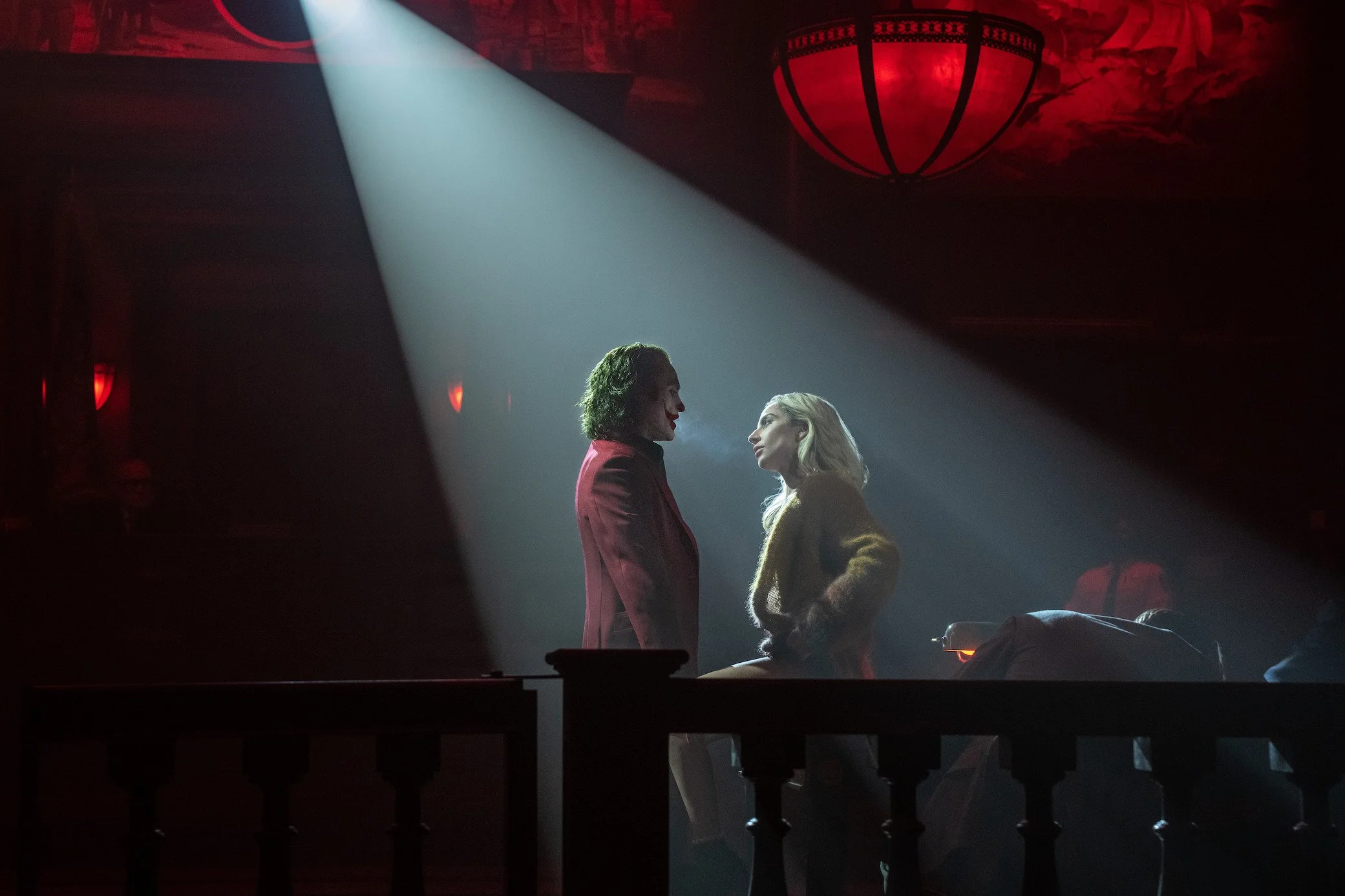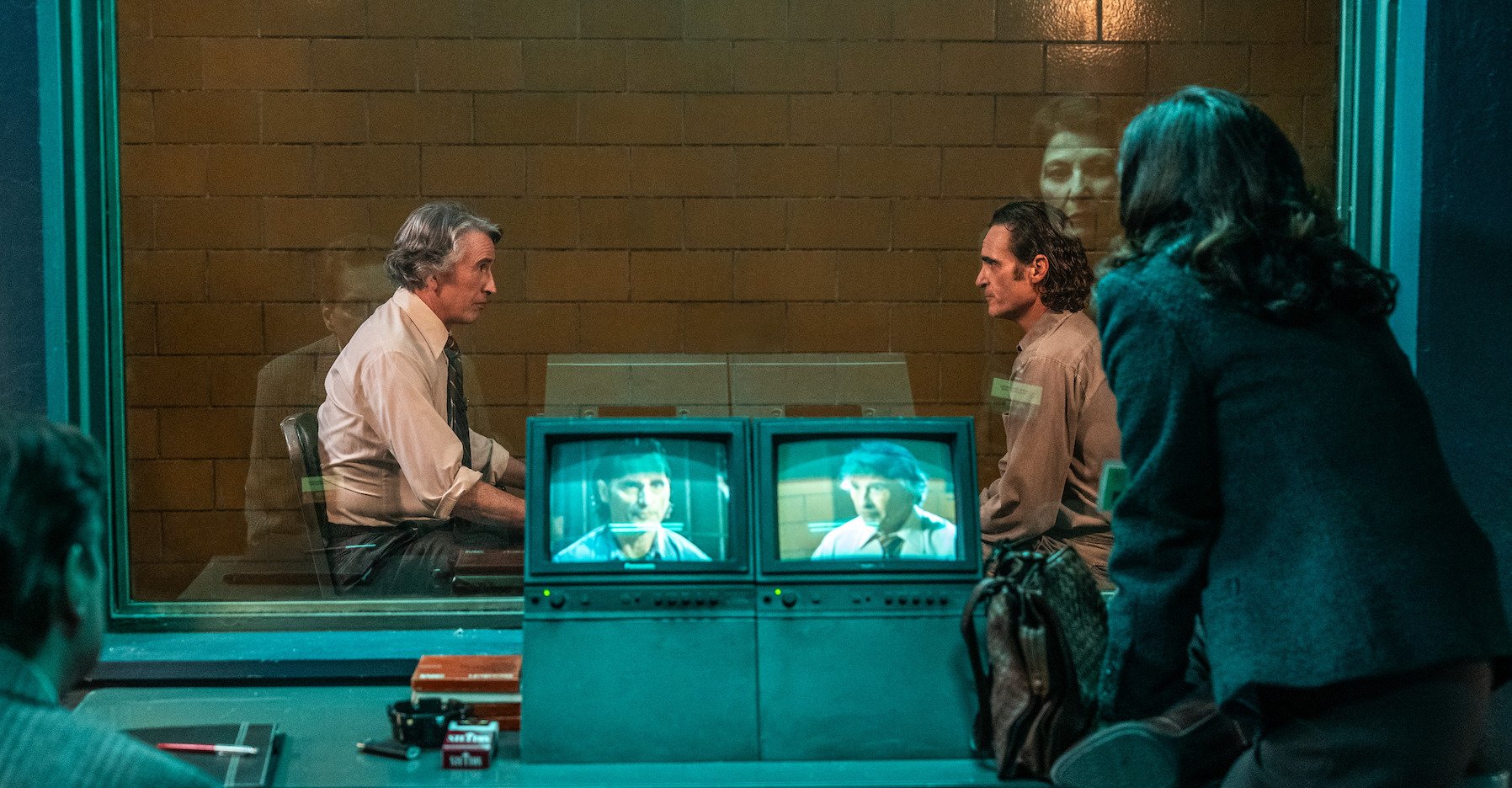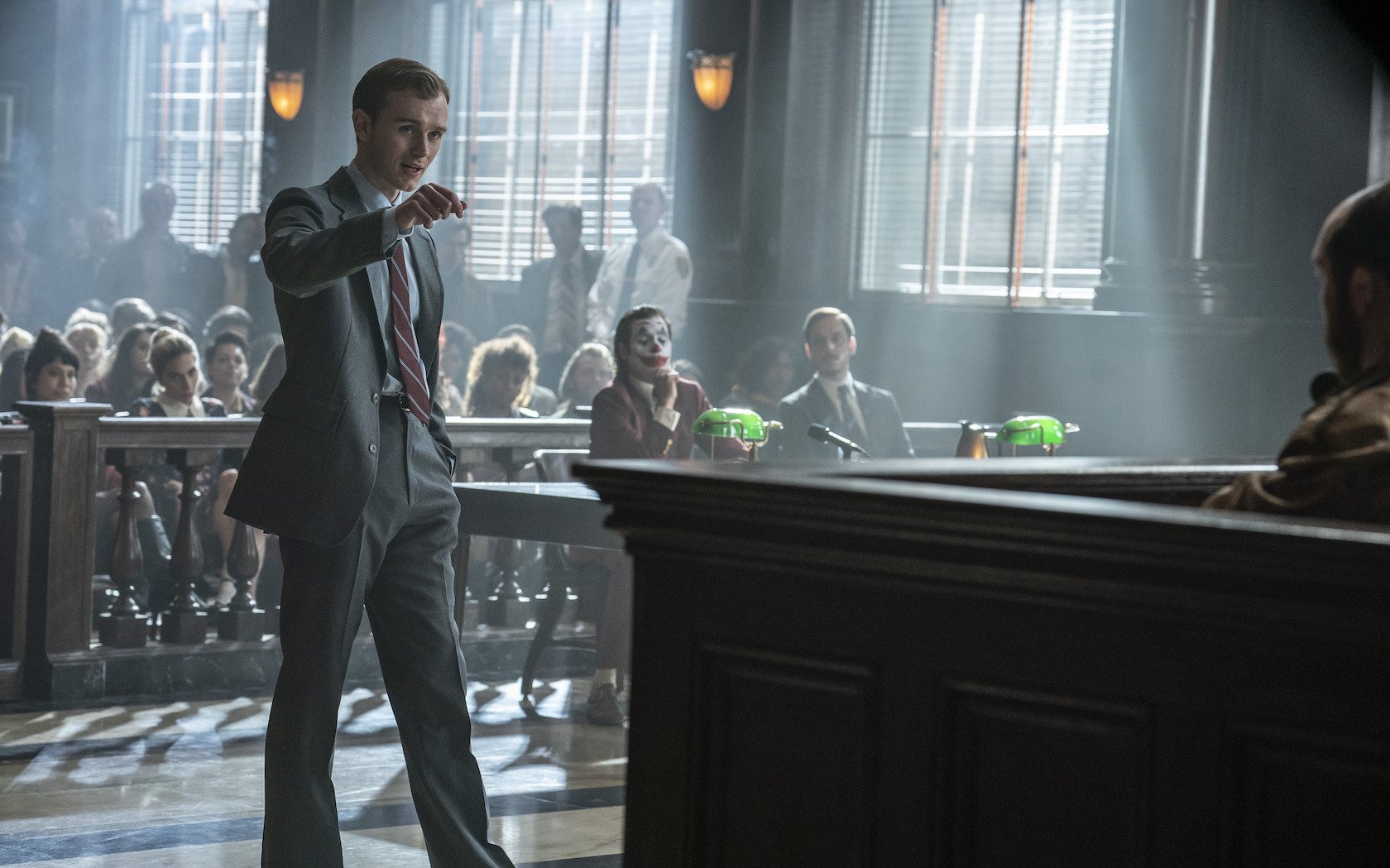Joke’s on Us
Quick, someone call Lin-Manuel Miranda.
Joker: Folie à Deux
Director: Todd Phillips • Writers: Scott Silver, Todd Phillips
Starring: Joaquin Phoenix, Lady Gaga, Brendan Gleeson, Catherine Keener, Zazie Beetz, Leigh Gill
USA • 2hrs 18mins
Opens Hong Kong Oct 2 • IIB
Grade: C
On paper, Joker: Folie à Deux should have been Lady Gaga’s Dick Tracy. Madonna’s 1990 foray into musical comic bookery resulted in a campy, visually creative fantasy that doubled as the source material for one of her three best albums: I’m Breathless. Some of those songs are by Stephen freakin’ Sondheim. Fight me. Fully invested in her Madonna V2.0 act, Lady Gaga’s turn as Harleen “Lee” Quinzel should have been her I’m Breathless, except juvenile comedy (The Hangover) director Todd Phillips and co-writer Scott Silver handcuff her in a film of half-measures, tiptoeing around the premise they seemed so chuffed about “rebelling” with – Joker in a musical – and coming out on the other side with a half-baked excuse to continue de-mythologising its main character. Dude, shit or get off the pot.
Joker: Folie à Deux is two movies: the first is the grim mental asylum drama-romance suggested by the title, in which Lee insinuates herself into the life of her crush/idol, Arthur Fleck, AKA Joker (Joaquin Phoenix), while both are at Arkham State Hospital. The second is a super-low energy courtroom drama in which Arthur’s murder trial unfolds live on television. Throughout both, Arthur and Lee (mostly Arthur) slip into jukebox musical flights of fancy. A folie à deux, of course, is a psychiatric term meaning “shared psychosis”, but if you squint a bit it sounds like a French dance phrase. This could have been Joker: Arabesque, or Joker: Pas de deux, Joker: Grand Jeté… You get the idea. Because for all the cagey marketing ploys that downplay the musical element, Folie à Deux is barely a musical. And, really, it’s barely a movie.
Admittedly the film starts on an encouraging note that hints it just might lean into its bonkers ambitions with a retro-animated opening salvo essentially reliving Arthur’s moment of homicidal glory on the Murray Franklin show. Like so much of the action, it’s in his head. We finally get to see what’s become of Arthur after his (probable) arrest: He’s been remanded for trial at Arkham, there’s been a TV movie about him (in two short years?) and his cult hero status has ballooned. He’s forged a shaky alliance with Arkham guard Jackie Sullivan (Brendan Gleeson), who rewards Arthur with cigarettes – more of Folie à Deux is told through cigarette smoke than song – and art therapy class. There he meets firebug Lee and begins a lunatic romance, despite warnings about Lee from his new lawyer Maryanne Stewart (Catherine Keener). She’s trying to get him off death row. Incredibly dull district attorney Harvey Dent (Harry Lawtey, Industry) has other plans.
That’s all set-up, so when Lee and Arthur attempt a jail break set to “If My Friends Could See Me Now” (lest we forget Phoenix earned an Oscar nod for Walk the Line) the film mostly reaches the giddy, joyful bombast associated with musicals. I would dare say critical for them. Aha! Now we begin.
Not so fast. The energy on display in the Arkham escape dissipates fast, and Folie à Deux sinks into a bog of internalised misery and whisper-singing that never lets Lady Gaga off the leash – a big mistake. This is her brand and the film noticeably perks up when she does get a chance to let loose her full-throated Broadway voice. Instead, the songs (covers of thematically complementing standards by Jacques Brel, Anthony Newley, Burt Bacharach & Hal David, Richard Rodgers and the like) bring what little narrative there is to a screeching halt, either elucidating what’s already obvious or muddling any forward momentum. This would have worked better as a sung-through. In Phillips’ interpretation of Joker’s world, Lee may not even be real, an interesting psychological point that’s left to wither on the vine along with other partially cooked points – about fellow inmate Ricky (Jacob Lofland), about Arthur’s never-in-a-million years broadcast interview with Paddy Meyers (Steve Coogan, not at his best), and so on. To those who say grim, grey tragedy doesn’t go with musical glee, may I present Lars von Trier’s Dancer in the Dark. And how dare Phillips force me to hold up von Trier as a paragon of sensitivity and good directorial taste.
Folie à Deux deserves some credit for colouring outside the lines with an IP whose success the studio no doubt wanted a carbon copy of (you know this is Warner at its most content-forward). But chances that everyone in Folie à Deux’s audiences is going to be disappointed are sky high, mostly because Phillips doesn’t truly commit to anything. If you’re going to do a musical, commit to the damn bit. Same goes for deconstructing cultural artefacts and apologising for incels. In the end, Folie à Deux doesn’t say much more about mental health, institutionalised abuse and corruption, disorder, disenfranchisement, fandom and media or failing systems than the first films did – and actually pumps the breaks on Joker’s finger-pointing at social services and girls who won’t talk to them as the reason for all the angry white men in basements. That might be bullshit, but at least it was a POV. No matter what you thought of Joker, at least it knew what it wanted to be. Folie à Deux flails around without a destination in mind.
For his part, Phoenix does his best to capture that lightning in a bottle again, and to his credit he does make Arthur as sympathetic in his distressed psychology as possible – yes often through raggedy song. But it’s Leigh Gill returning for a small role as fellow clown Gary Puddles that does more for the character than anyone else. His heartbreaking testimony illustrates Arthur’s tragedy better than Arthur or Maryanne or Paddy do, and he knocks it out of the park when detailing how the Joker has fucked up his life – even though he’s alive. More of that humanity would have lifted the film out of its moribund storytelling. Will there be a part three? If Joker: Folie à Deux racks up any kind of coin, sure, why not? There’s room for another walk up the steps. Let’s just kill the music.



